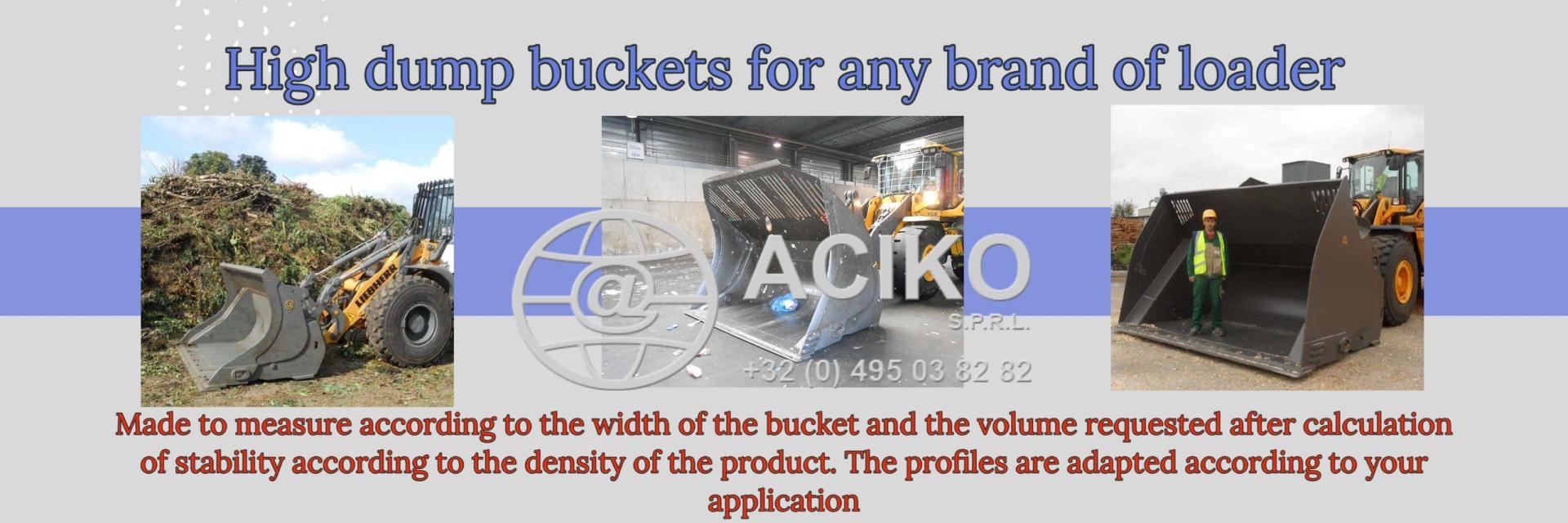AI is Transforming Foundation Levelling
 07/08/25-FR-English-NL-footer
07/08/25-FR-English-NL-footer
L’intelligence artificielle remet les fondations à niveau
 Image-R.E.News©
Image-R.E.News©
Dans le monde de la construction, tout commence au sol. Littéralement. La dalle en béton constitue le point de départ de chaque bâtiment, du pavillon de banlieue à la tour étincelante. Mais si cette dalle n’est pas parfaitement plane, tout l’édifice risque tôt ou tard de se fissurer, de se déplacer… ou pire, de s’effondrer. C’est là qu’intervient FLAT, pour Flat and Level Analysis Tool, un outil révolutionnaire mis au point par les chercheurs du Laboratoire national d’Oak Ridge (ORNL).
FLAT, ce n’est pas un gadget numérique de plus. C’est un assistant intelligent qui utilise un scanner laser à 360° pour analyser en un clin d’œil la planéité d’une dalle de béton. Grâce à l’intelligence artificielle et à des algorithmes de segmentation, il repère la moindre irrégularité, calcule, compare, et en moins d’une minute, livre un diagnostic précis et fiable. Une technologie qui relègue les anciennes méthodes au rang de souvenirs poussiéreux.
Ancien monde vs nouvelle ère
Traditionnellement, vérifier la planéité d’une dalle relevait de la corvée. On traçait des lignes, on mesurait à la main, on avançait lentement, à coup de profilomètres et de marquages fastidieux. Ce processus manuel, non seulement chronophage, laissait aussi place à l’erreur humaine. Et une dalle mal nivelée peut coûter cher : reprises de béton, retards de chantier, défauts structurels...
« Avec cet outil numérique, on obtient rapidement une estimation précise de la surface, sans grande intervention humaine », explique Nolan Hayes, chercheur à l’ORNL.
« FLAT peut vous dire en moins d’une minute si des erreurs ont été faites, et où elles se trouvent. »
Ce n’est pas une simple amélioration. C’est un changement de paradigme. Lors de tests sur deux lotissements, FLAT a permis de réduire de plus de 90 % le temps consacré aux mesures. Une économie majeure.
Le secret de FLAT ? L’alliance du laser et de l’intelligence
Tout commence par un balayage laser complet du chantier, effectué par un capteur LiDAR 360°. Ce scanner capte chaque micro-contour de la surface, comme une topographie à très haute précision. Ensuite, le logiciel entre en jeu : des algorithmes d’apprentissage automatique analysent les données, segmentent la dalle, et repèrent tout écart au seuil de tolérance.
Autre avantage : aucune préparation préalable de la dalle n’est requise. Pas de marquage, pas de nettoyage spécifique. Le système est clé en main, simple à déployer, et ne nécessite ni matériel supplémentaire, ni main-d'œuvre dédiée.
Ses principaux atouts :
Résultats quasi instantanés (moins de 60 secondes)
Plus de 90 % de gain de temps
Pas de préparation de dalle
Précision et constance inégalées
Et demain ?
Aujourd’hui, FLAT a déjà prouvé son efficacité sur des dalles standards posées au sol. Mais l’équipe voit plus loin. Des tests sont en cours sur d’autres types de fondations : dalles suspendues, planchers métalliques, pieux, etc. À chaque configuration son défi, mais le principe reste le même : une base bien plane est la clé de tout.
« Notre ambition est de créer une suite d’outils basés sur cette méthode pour divers scénarios de construction », affirme Hayes.
« On ne se contente pas de résoudre un problème. On construit une nouvelle façon de bâtir. »
Temps, argent et qualité : le trio gagnant
Dans le BTP, chaque minute compte. Réduire de 90 % le temps d’une opération, c’est autant de main-d’œuvre libérée, de matériel économisé et de délais raccourcis. Mais au-delà du gain économique, FLAT renforce la qualité et la durabilité des ouvrages.
Une fondation parfaitement plane limite les réparations, les sinistres, les litiges et augmente la satisfaction des clients. Et pour les promoteurs qui jonglent avec plusieurs chantiers, c’est un gage de tranquillité inestimable.
Une industrie qui entre dans l’ère du numérique
L’intelligence artificielle et l’analyse de données ne sont plus des concepts futuristes. Elles sont là, bien réelles, et redéfinissent les méthodes de construction. Machines autonomes, suivi de chantier en temps réel, outils d’optimisation… et maintenant, diagnostic instantané de fondations.
FLAT s’inscrit dans cette révolution. Il remplace l’incertitude par des certitudes. Il donne aux professionnels des outils de précision, adaptés à un monde où chaque erreur coûte cher.
Un nouveau standard en devenir
Alors que les pratiques numériques s’imposent sur les chantiers, des outils comme FLAT deviendront bientôt indispensables. Non pas pour remplacer l’expertise humaine, mais pour l’augmenter.
Et demain, qui sait ? Peut-être que les règlements imposeront des scans numériques systématiques des fondations. Ce jour-là, FLAT sera déjà prêt.
L’assurance béton du futur
Les outils d’aide à la construction assistés par IA ne relèvent plus de la science-fiction. Ils transforment le réel. FLAT en est la preuve éclatante : une innovation qui, en s’attaquant à quelque chose d’aussi basique qu’une dalle, impacte toute la chaîne de construction.
En mariant le laser à l’intelligence artificielle, ORNL donne aux bâtisseurs ce qu’ils attendaient sans le savoir : la certitude que leur ouvrage commence sur une base solide.
Et dans le bâtiment comme ailleurs, tout commence par de bonnes fondations.
NJC.© Info Flat and Level Analysis Too
----------------------------------------------------------------------------------------------------------------
 07/08/25-English
07/08/25-English
Artificial Intelligence Levels the Foundation
 Image-R.E.News©
Image-R.E.News©
In the world of construction, everything starts at the ground level. Literally. The concrete slab is the starting point for every building, from a suburban home to a gleaming tower. But if that slab isn't perfectly level, the entire structure risks cracking, shifting... or worse, collapsing. That's where FLAT, a revolutionary tool developed by researchers at Oak Ridge National Laboratory (ORNL), comes in.
FLAT isn't just another digital gadget. It's an intelligent assistant that uses a 360° laser scanner to analyze the flatness of a concrete slab in the blink of an eye. Using artificial intelligence and segmentation algorithms, it identifies the slightest irregularity, calculates, compares, and in less than a minute, delivers an accurate and reliable diagnosis. A technology that relegates old methods to a dusty memory.
Old world vs. new era
Traditionally, checking the flatness of a slab was a chore. Lines were drawn, measurements were taken by hand, and work progressed slowly, using profilometers and tedious markings. This manual process was not only time-consuming, but also left room for human error. And an improperly leveled slab can be costly: rework, construction delays, structural defects, and more.
"With this digital tool, we quickly obtain an accurate estimate of the surface area, without much human intervention," explains Nolan Hayes, a researcher at ORNL.
"FLAT can tell you in less than a minute if errors have been made and where they are."
This isn't just an improvement. It's a paradigm shift. In tests on two housing developments, FLAT reduced the time spent on measurements by more than 90%. A major saving.
The secret of FLAT? The combination of laser and intelligence.
It all begins with a complete laser scan of the construction site, performed by a 360° LiDAR sensor. This scanner captures every micro-contour of the surface, like a very high-precision topography. Then, the software comes into play: machine learning algorithms analyze the data, segment the slab, and identify any deviations from the tolerance threshold.
Another advantage: no prior slab preparation is required. No marking, no specific cleaning. The system is turnkey, easy to deploy, and requires no additional equipment or dedicated labor.
Its main advantages:
Near-instant results (less than 60 seconds)
Time savings of over 90%
No slab preparation
Unparalleled precision and consistency
And tomorrow?
Today, FLAT has already proven its effectiveness on standard slabs laid on the ground. But the team is looking further ahead. Tests are underway on other types of foundations: suspended slabs, metal floors, piles, etc. Each configuration presents its own challenges, but the principle remains the same: a perfectly level foundation is the key.
"Our ambition is to create a suite of tools based on this method for various construction scenarios," says Hayes.
"We're not just solving a problem. We're building a new way of building."
Time, Money, and Quality: The Winning Trio
In the construction industry, every minute counts. Reducing the time of an operation by 90% frees up labor, saves materials, and shortens deadlines. But beyond the economic gain, FLAT enhances the quality and durability of structures.
A perfectly level foundation limits repairs, claims, and disputes, and increases client satisfaction. And for developers juggling multiple construction sites, it provides invaluable peace of mind. An industry entering the digital age
Artificial intelligence and data analysis are no longer futuristic concepts. They are here, very real, and are redefining construction methods. Autonomous machines, real-time site monitoring, optimization tools... and now, instant foundation diagnostics.
FLAT is part of this revolution. It replaces uncertainty with certainty. It provides professionals with precision tools, adapted to a world where every error is costly.
A new standard in the making
As digital practices become more widespread on construction sites, tools like FLAT will soon become indispensable. Not to replace human expertise, but to augment it.
And tomorrow, who knows? Perhaps regulations will require systematic digital scans of foundations. By then, FLAT will already be ready.
Concrete Insurance of the Future
AI-assisted construction tools are no longer science fiction. They're transforming reality. FLAT is a shining example: an innovation that, by tackling something as basic as a slab, impacts the entire construction chain.
By combining lasers with artificial intelligence, ORNL gives builders what they've been waiting for without realizing it: the certainty that their project is starting on a solid foundation.
And in construction, as elsewhere, everything starts with a good foundation.
NJC.© Info Flat and Level Analysis Too
---------------------------------------------------------------------------------------------------------------
 07/08/25-NL
07/08/25-NL
Kunstmatige intelligentie egaliseert de fundering
 Image-R.E.News©
Image-R.E.News©
In de bouwwereld begint alles op de begane grond. Letterlijk. De betonnen plaat is het startpunt voor elk gebouw, van een huis in een buitenwijk tot een glimmende toren. Maar als die plaat niet perfect waterpas ligt, loopt de hele constructie het risico te scheuren, te verschuiven... of erger nog, in te storten. Daar komt FLAT, een revolutionaire tool ontwikkeld door onderzoekers van het Oak Ridge National Laboratory (ORNL), om de hoek kijken.
FLAT is niet zomaar een digitale gadget. Het is een intelligente assistent die met een 360°-laserscanner in een oogwenk de vlakheid van een betonnen plaat analyseert. Met behulp van kunstmatige intelligentie en segmentatiealgoritmen identificeert het de kleinste onregelmatigheid, berekent, vergelijkt en levert in minder dan een minuut een nauwkeurige en betrouwbare diagnose. Een technologie die oude methoden naar een stoffig verleden verwijst.
Oude wereld versus nieuw tijdperk
Traditionele tijd was het controleren van de vlakheid van een plaat een hele klus. Er werden lijnen getrokken, metingen met de hand verricht en het werk vorderde langzaam, met behulp van profielmeters en vervelende markeringen. Dit handmatige proces was niet alleen tijdrovend, maar liet ook ruimte voor menselijke fouten. En een niet goed genivelleerde plaat kan kostbaar zijn: herbewerking, vertragingen in de bouw, structurele gebreken en meer.
"Met deze digitale tool krijgen we snel een nauwkeurige schatting van de oppervlakte, zonder veel menselijke tussenkomst", legt Nolan Hayes, onderzoeker bij ORNL, uit.
"FLAT kan je in minder dan een minuut vertellen of er fouten zijn gemaakt en waar die zitten."
Dit is niet zomaar een verbetering. Het is een paradigmaverschuiving. Bij tests in twee woningbouwprojecten heeft FLAT de tijd die aan metingen wordt besteed met meer dan 90% verminderd. Een enorme besparing.
Het geheim van FLAT? De combinatie van laser en intelligentie.
Het begint allemaal met een volledige laserscan van de bouwplaats, uitgevoerd door een 360° LiDAR-sensor. Deze scanner legt elke microcontour van het oppervlak vast, als een zeer nauwkeurige topografie. Vervolgens komt de software in beeld: machine learning-algoritmen analyseren de data, segmenteren de vloer en identificeren eventuele afwijkingen van de tolerantiedrempel.
Een ander voordeel: er is geen voorafgaande voorbereiding van de vloer nodig. Geen markeringen, geen specifieke reiniging. Het systeem is gebruiksklaar, eenvoudig te implementeren en vereist geen extra apparatuur of speciale arbeid.
De belangrijkste voordelen:
Vrijwel direct resultaat (minder dan 60 seconden)
Tijdsbesparing van meer dan 90%
Geen vloervoorbereiding
Ongeëvenaarde precisie en consistentie
En morgen?
FLAT heeft zijn effectiviteit al bewezen op standaardvloeren die op de grond zijn gelegd. Maar het team kijkt verder vooruit. Er worden tests uitgevoerd met andere soorten funderingen: zwevende vloeren, metalen vloeren, heipalen, enz. Elke configuratie brengt zijn eigen uitdagingen met zich mee, maar het principe blijft hetzelfde: een perfect vlakke fundering is de sleutel.
"Onze ambitie is om op basis van deze methode een reeks tools te creëren voor verschillende bouwscenario's", aldus Hayes. "We lossen niet zomaar een probleem op. We ontwikkelen een nieuwe manier van bouwen."
Tijd, geld en kwaliteit: het winnende trio
In de bouwsector telt elke minuut. Door de tijd van een operatie met 90% te verkorten, wordt er arbeid bespaard, materiaal bespaard en worden deadlines verkort. Maar naast de economische voordelen verbetert FLAT ook de kwaliteit en duurzaamheid van constructies.
Een perfect vlakke fundering beperkt reparaties, claims en geschillen en verhoogt de klanttevredenheid. En voor ontwikkelaars die meerdere bouwlocaties beheren, biedt het onschatbare gemoedsrust. Een sector die het digitale tijdperk betreedt
Kunstmatige intelligentie en data-analyse zijn geen futuristische concepten meer. Ze zijn er, heel reëel, en herdefiniëren bouwmethoden. Autonome machines, realtime bouwplaatsmonitoring, optimalisatietools... en nu ook directe funderingsdiagnostiek.
FLAT maakt deel uit van deze revolutie. Het vervangt onzekerheid door zekerheid. Het biedt professionals precisietools, aangepast aan een wereld waar elke fout kostbaar is. Een nieuwe standaard in de maak
Naarmate digitale praktijken steeds gangbaarder worden op bouwplaatsen, zullen tools zoals FLAT binnenkort onmisbaar worden. Niet om menselijke expertise te vervangen, maar om deze aan te vullen.
En morgen, wie weet? Misschien vereist de regelgeving systematische digitale scans van funderingen. Tegen die tijd is FLAT er al klaar voor.
Betonverzekering van de toekomst
AI-ondersteunde bouwtools zijn geen sciencefiction meer. Ze transformeren de realiteit. FLAT is een lichtend voorbeeld: een innovatie die, door iets zo fundamenteels als een plaat aan te pakken, de hele bouwketen beïnvloedt.
Door lasers te combineren met kunstmatige intelligentie geeft ORNL bouwers waar ze onbewust op hebben gewacht: de zekerheid dat hun project op een solide basis begint.
En in de bouw, net als elders, begint alles met een goede fundering.
NJC.© Info Flat and Level Analysis Too
------------------------------------------------------------------------------------------------------------------
Date de dernière mise à jour : 06/08/2025
















